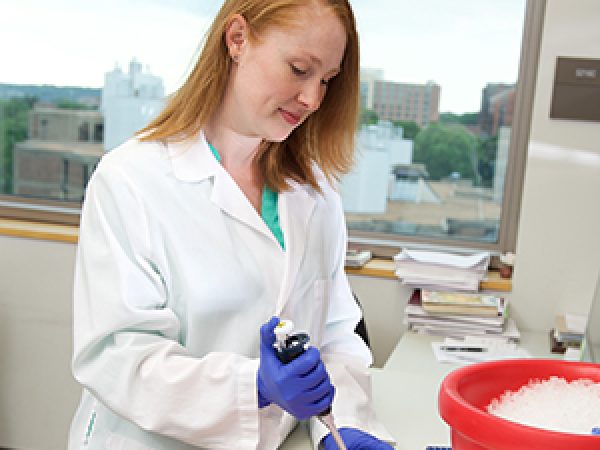AACR-AHNS Head and Neck Cancer Conference: Highlights from the Cutting Edge
Across the surfaces of your mouth, throat, and nasal sinuses, layers of flat cells called squamous cells protect the underlying tissues from injury and pathogens. While these guardian cells are crucial to preserve the function of the tissues they defend, factors such as aging, tobacco, environmental pollutants, and infections can damage the squamous cells, potentially leading to cancer.
Squamous cell carcinomas are the most common form of head and neck cancer, a category that can also include cancers of the salivary glands, nerves, and muscles in the head and neck area. According to the National Cancer Institute, an estimated 66,920 people in the United States will be diagnosed with cancers of the oral cavity, pharynx, and larynx in 2023, and around 15,400 individuals will die from these cancers.
To discuss the latest advances in head and neck cancer research and treatment, the American Association for Cancer Research (AACR) and the American Head and Neck Society (AHNS) hosted the third AACR-AHNS Head and Neck Cancer Conference: Innovating Through Basic, Clinical, And Translational Research, which took place July 7-8 in Montréal, Québec. We bring you a few highlights of cutting-edge research presented at the meeting.
Cancer Detection Five Years in Advance
A common cause of head and neck squamous cell carcinoma (HNSCC) is infection with the human papillomavirus (HPV). Typically, the body’s immune system clears HPV infections, but occasionally, the virus remains in the infected tissue, causing cell damage that could lead to cancer.
Blood tests that analyze circulating DNA for signs of cancer can detect HPV, but typically only after a tumor is detected by other methods, explained Daniel Faden, MD, an assistant professor at Harvard Medical School, an attending surgeon at Mass Eye and Ear and Mass General Hospital, and an associate scientist at the Broad Institute of MIT and Harvard. However, mutations caused by an HPV infection start accumulating 10 to 20 years before a cancer diagnosis.
“[Circulating] HPV DNA likely is detectable many years prior to diagnosis in HPV-positive head and neck cancer, but we need much more sensitive and reliable approaches to detect it,” Faden said.

He and his colleagues developed HPV-DeepSeek, a high-throughput sequencing tool with up to 25 times higher sensitivity in preclinical samples and up to 80 times higher sensitivity in clinical samples than droplet digital PCR. In addition to detecting HPV, the test also looks for common cancer-associated mutations and measures the size of DNA fragments being sequenced, which can vary between normal and cancer cell DNA. The results are then fed into a machine learning algorithm to identify early signs of HPV-positive HNSCC.
Faden and colleagues then tested the method on a series of samples from 28 healthy individuals and 28 individuals who developed HPV-positive HNSCC 15 to 130 months after the sample was taken. All controls tested negative, and 22 of 28 patients tested positive. The test was 100% accurate at detecting HPV+ HNSCC when samples were taken within three years of diagnosis and 95% accurate when samples were taken within five years of diagnosis.
“Taken together, this suggests that accurate screening for HPV-positive head and neck cancer is feasible using ultrasensitive approaches,” Faden said.
A Liquid Biopsy for local recurrences
While blood is the most common site to measure circulating DNA that may indicate cancer, local recurrences are harder to detect in blood, explained José Zevallos, MD, MPH, professor and chairman of the Department of Otolaryngology at the University of Pittsburgh. For patients with human papillomavirus (HPV)-negative HNSCC, local recurrences pose a significant concern, Zevallos said.
When a tumor is removed, the surgical drain collects excess blood, lymph, and interstitial fluid from the surgical site while the wound heals. Zevallos and colleagues hypothesized that fluid from the drain may hold evidence of cancer cells that remain at the site or in nearby lymph nodes after surgery.

MD, MPH
“The potential exists to use a molecular assay to more accurately predict a recurrence, as an adjunct to surgical pathology that we continue to use as standard of care,” Zevallos said.
The researchers collected DNA from the tumors, white blood cells, drain fluid, and plasma of 22 patients with HPV-negative HNSCC. They used the tumor DNA and white blood cell DNA to identify tumor-specific mutations they could search for in lymph isolated from the drain fluid as well as in plasma isolated from the blood.
More than 50% of tumor-specific mutations were missed in plasma but only 18.6% of mutations were not detected in lymph samples. Lymph also more accurately predicted recurrence, with an area under the curve of 0.9 compared with 0.67 in plasma. Patients who experienced a relapse had a significantly higher number of tumor mutations in lymph but not plasma, and those who had two or more tumor-specific mutations in lymph were 12.52 times more likely to experience tumor recurrence or death.
Zevallos showed that lymph was superior to plasma at predicting local recurrences, while lymph and plasma were equivalent for distant ones, meaning the two fluids have complementary uses. “This, I think, highlights the opportunity to use both of these biofluids to collectively determine the risk of recurrence and also specify where the recurrence may be at highest risk,” he said.
The Importance of Treatment Before Surgery
The immune checkpoint inhibitors (ICIs) pembrolizumab (Opdivo) and nivolumab (Keytruda), which block immune cells’ natural brakes to help them fight cancer, are approved to treat oral cancer that has recurred on other therapies. However, researchers are just starting to evaluate these therapies in the neoadjuvant setting (before surgery).

Clint Allen, MD, acting chief of the Surgical Oncology Program at the National Cancer Institute of the National Institutes of Health, cited several early-phase clinical trials in which neoadjuvant ICIs significantly boosted the two-year recurrence-free survival rate in patients with oral cancer. Similarly, in mice, when researchers removed a tumor in the absence of ICI therapy, or ICIs were given after surgery, and researchers later rechallenged the mice with tumor cells, the tumors grew. However, when the mice were given a neoadjuvant ICI, the rechallenge was unsuccessful; the mice eliminated the cancer cells before they could form a tumor.
“We’ve known for a long time there’s something special about giving the immune checkpoint blockade when the primary tumor is there,” Allen said. “If you wait until after it’s gone, you don’t seem to get this robust immune response.”
To understand why, Allen and colleagues isolated T cells from the tumors and blood of oral cancer patients before and after treatment with neoadjuvant bintrafusp alpha, an ICI that also sequesters the immune-suppressive cytokine TGFβ. They found that prior to bintrafusp alpha treatment, tumor-targeting T cells were prevalent around the tumor but almost nonexistent in the blood.
Bintrafusp alpha spurred the expansion of tumor-targeting T cells and drove more of them into the bloodstream. Allen suggested this may partially explain how ICIs foster the development of anticancer memory cells that can fight recurrences. If nearly all of the tumor-specific T cells exist in the tumor, when the tumor is removed, so is the body’s immune defense against the cancer, he hypothesized.
“We’re trying to make the argument that, unless you take the opportunity to do something in the neoadjuvant space … you’re probably removing the vast majority of that patient’s antitumor immune response,” Allen said. “And if we make the assumption or the hypothesis that systemic antitumor immunity is important for preventing these disease relapses, this has real implications.”
Bridging Radiation and Immunotherapy
Despite the potential benefits of ICI therapy, not all patients respond, and some who initially respond later develop resistance. Radiation has been shown to improve immunotherapy response by causing DNA and cell damage and by stimulating the cGAS/STING signaling pathway, which can reactivate T cells exhausted by ICIs.
However, radiotherapy can damage healthy tissues at therapeutically relevant doses. Drugs called radioenhancers can amplify the effects of radiation in solid tumors, allowing for stronger effects at lower doses, said Colette Shen, MD, PhD, a professor of radiation oncology at the University of North Carolina and a radiation oncologist at the UNC Lineberger Comprehensive Cancer Center.

MD, PhD
Shen and colleagues studied NBTXR3, a radioenhancer nanoparticle composed of hafnium oxide that is injected into the tumor prior to radiotherapy. It is biologically inactive in the absence of radiation, but when irradiated, its high electron density helps to increase the dose of energy delivered to each cell.
In mouse models, NBTXR3 combined with radiotherapy drove superior tumor reduction and overall survival compared with either agent alone. Adding an ICI that blocks the immune checkpoint PD-1 further improved responses, even in tumors resistant to anti-PD-1 therapy.
Shen and colleagues also showed that, in mice with two tumors, if only one was given NBTXR3 and irradiated, the other tumor shrank as well.
These observations led to several clinical studies. The phase I Study 102 enrolled patients with localized but advanced HNSCC who were ineligible for cisplatin or cetuximab (Erbitux) treatment. Patients treated with NBTXR3 at the recommended phase II dose experienced a complete response rate of 63.6% in injected lesions and 52.3% in all lesions, with a median overall survival of 23.1 months. NBTXR3 also showed preliminary efficacy in a phase I study of patients with metastatic HNSCC. Researchers are currently following up on these data in NANORAY-312, a phase III trial that will compare radiotherapy with radiotherapy plus NBTXR3.
“NBTXR3 is potentially a mechanism that can synergize with multiple treatment modalities for cancer,” Shen said. “It is a radiation enhancer, and it can potentially prime the immune [system] to increase response to immunotherapy and overcome resistance to immune checkpoint inhibitors.”



